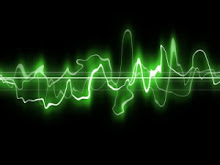It is not just the fact that avant-garde German composer Karlheinz Stockhausen gets his face on the cover of the Beatles’ Sgt. Pepper’s Lonely Hearts Club Band album that makes him interesting and important to the world of rock – it’s the way that, as a classical composer, he stretched the boundaries of music by endlessly daring uses of rhythm, electronics, noise and experimentation. And perhaps one of the most spectacular examples of his creativity is the album I have been listening to today – his famous Helikopter-Quartett.
The Helikopter-Quartett was written in 1992/1993 and I guess, technically, it’s an octet – written for two violins, a viola, a cello and four helicopters. Needless to say, performances of it are not particularly common and my recording of it, performed by the Arditti Quartet for whom it was written is just superb - which is good, because it's the only one.
Stockhausen had a whole lot of elaborate instructions about how it was supposed to be performed, with one musician in each helicopter, the helicopters circling the performance venue for about half an hour while the audience sits in a hall listening to the music of the instruments and of the helicopters, and watching the musicians, all being fed back to them via microphones and cameras and video screens.
It starts with the charging up of the helicopter turbines, the instruments fire up too, and, while they all whirl and swirl around, the strings racing through some incredibly fast tremolo passages, screeching up and down and around their registers, synchronised with the rhythm of the helicopter blades, the musicians shout out numbers in German.
It creates an amazing effect – hypnotic, exhilarating. You feel you are in the helicopters, in the air, in the music – all melded here into the one thing. Here the line between music and noise is totally blurred, with each merging into, and relying on, each other so much that neither really makes sense without the other.
Eventually the whole thing winds down – the helicopters land, their engines are switched off, the whir of the blades slows down, and the frenetic tremolo of the strings turns into a steady pulse, their pitch descends almost imperceptibly to ground level and then, eventually, everything stops. You get out at the end feeling giddy and breathless and, even though you're back on the ground, a big part of you is still very much on top of the world.
You are certainly not going to want to get up and dance to Stockhausen’s Helikopter-Quartett, nor are you going to find yourself involuntarily tapping your foot to it – but you will be swept up by it and, if you let yourself, you will become immersed in it. It's thrilng music - electric in its intensity and energy.
Like much in avant-garde classical music, it would be easy to dismiss the Helikopter-Quartett as gimmicky. But, if you listen to it on its own terms, and to the way it blends rhythm and melody and pitch and music and noise into one electrifyingly exciting journey through the sky, you might just find yourself wondering why it took so long for something so striking to be written.
It’s a shame that the way we put music into genres and pigeon holes so easily leads to us failing to open our ears and our minds to so many things. And, in the process, we not only miss out on hearing a lot of great music but also on seeing the links between it all, and how everything, ultimately, is informed by, and grows out of, everything else.
Maybe that’s what the Beatles knew, back in 1967, when they put Karlheinz Stockhausen on the cover of one of their best albums, wedged in between Lenny Bruce and W C Fields.
Subscribe to:
Post Comments (Atom)


No comments:
Post a Comment